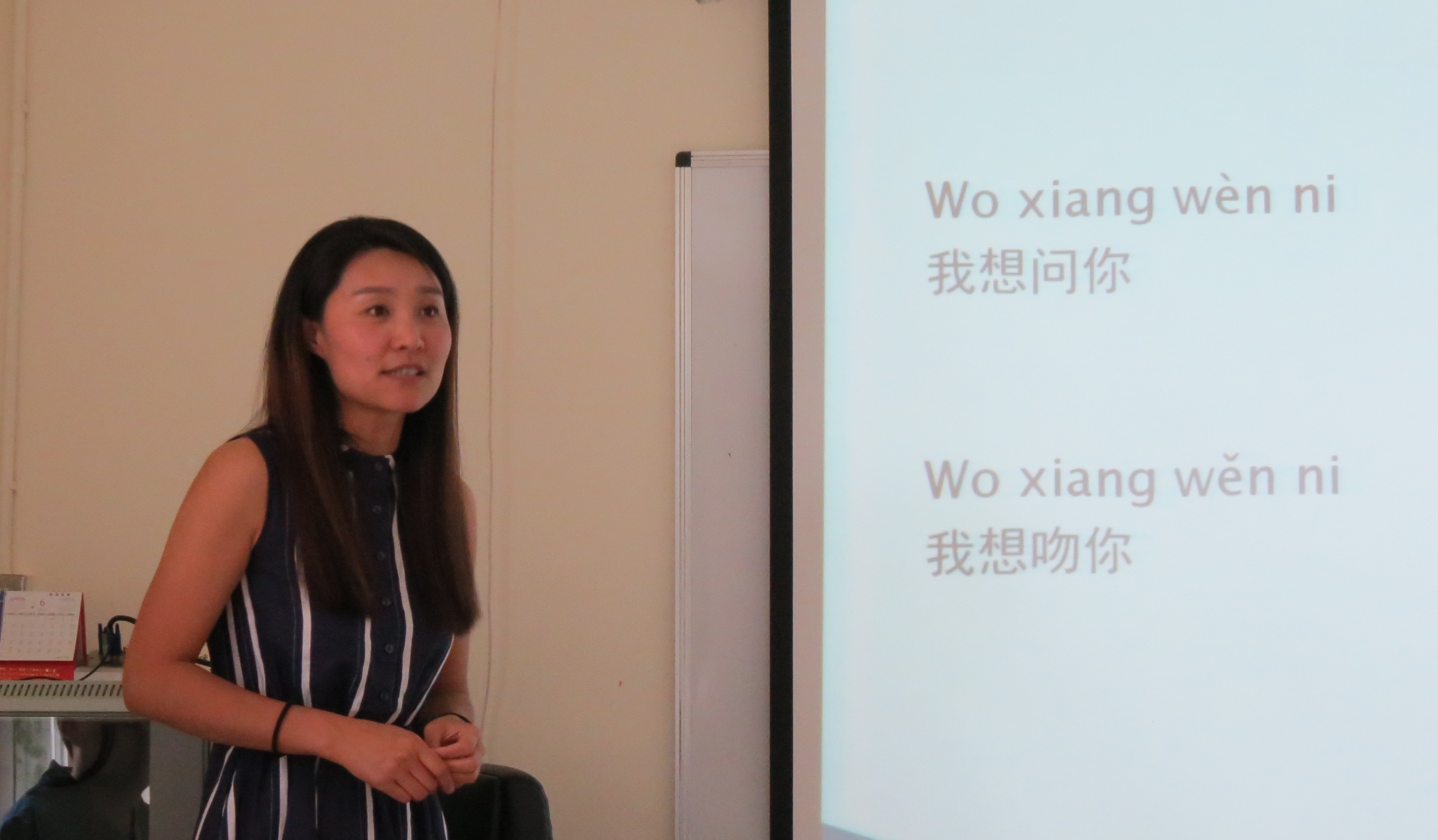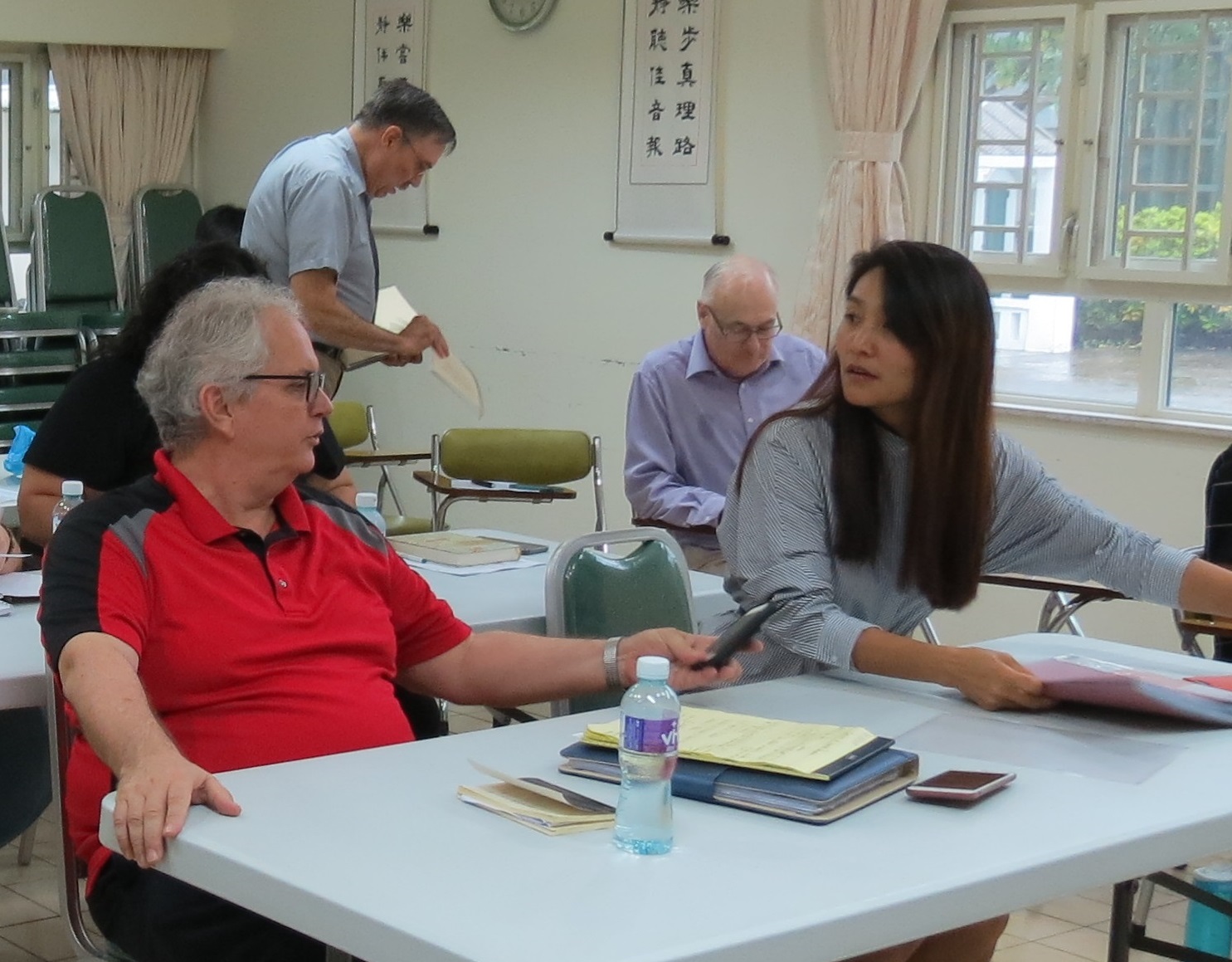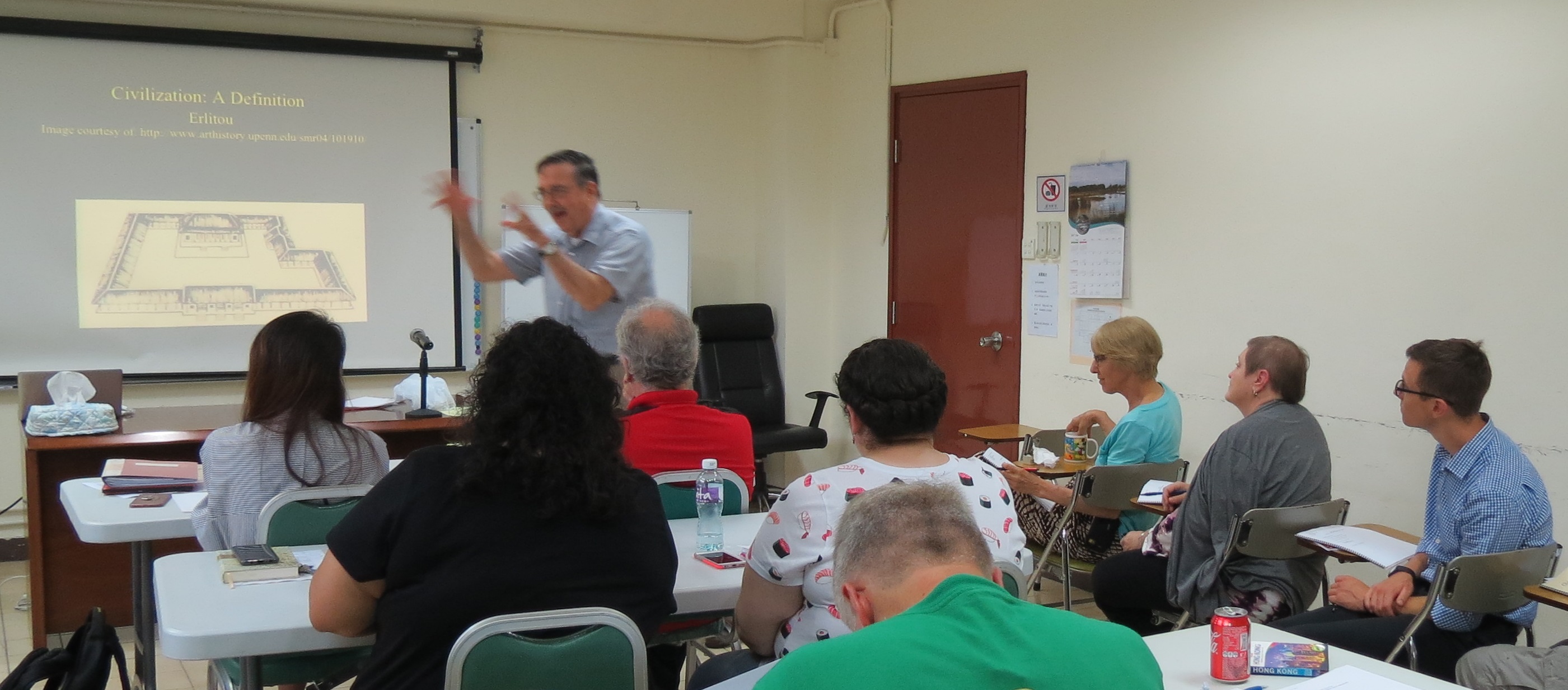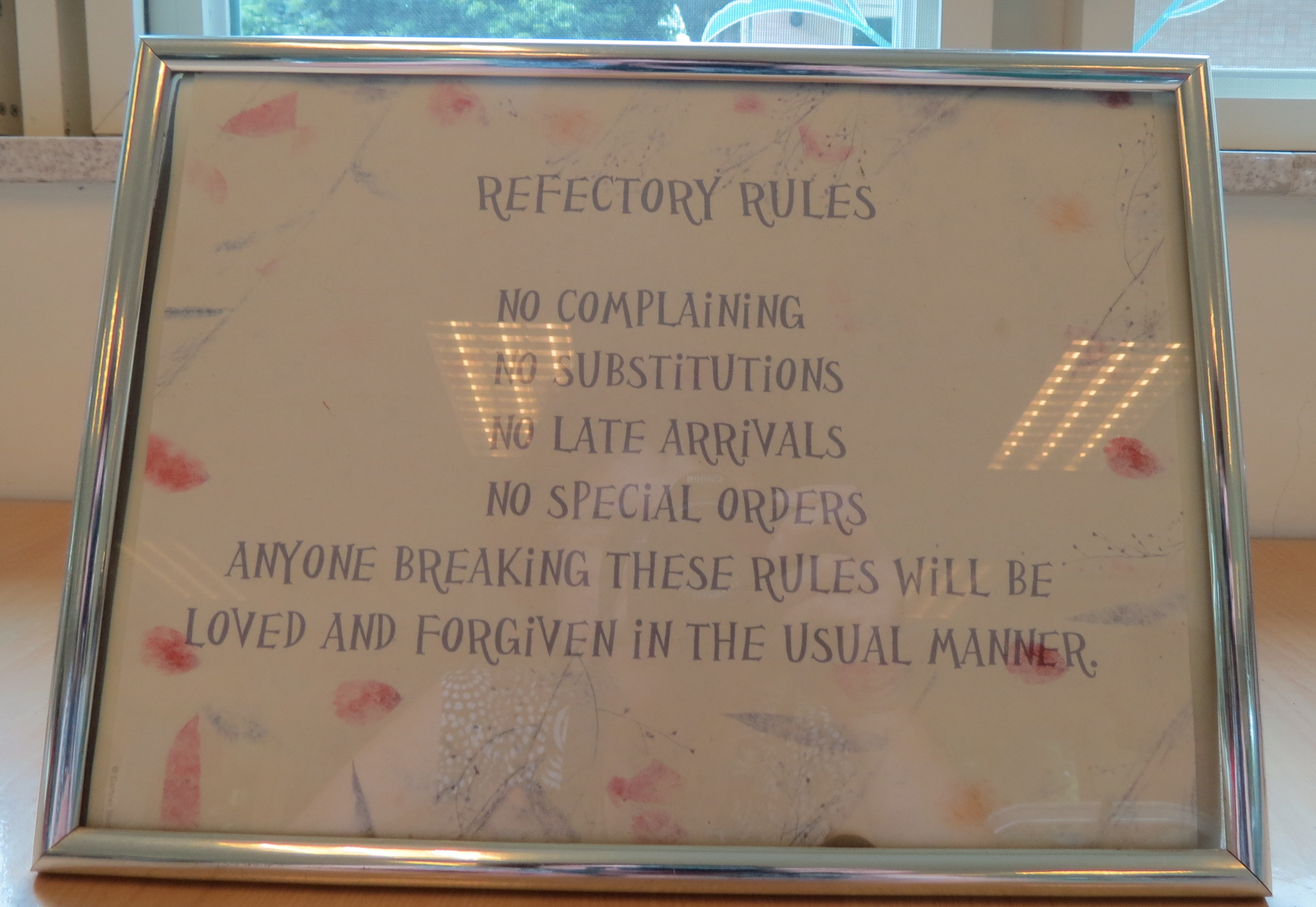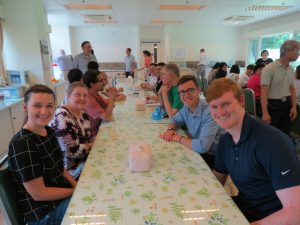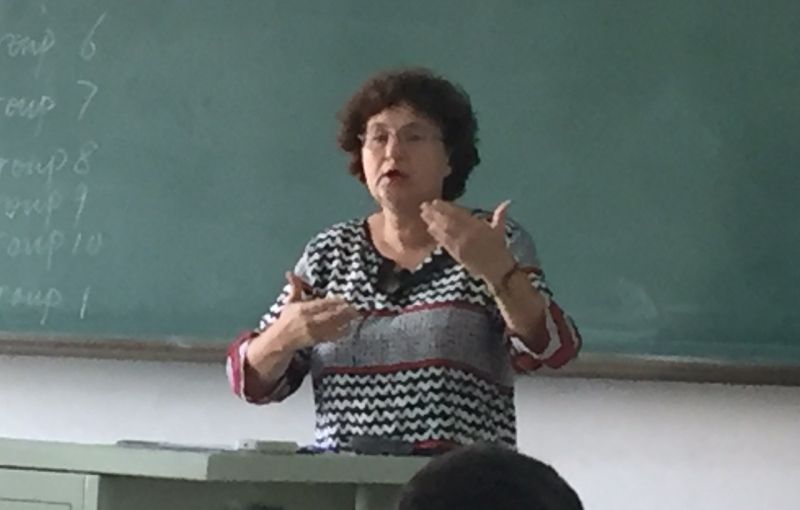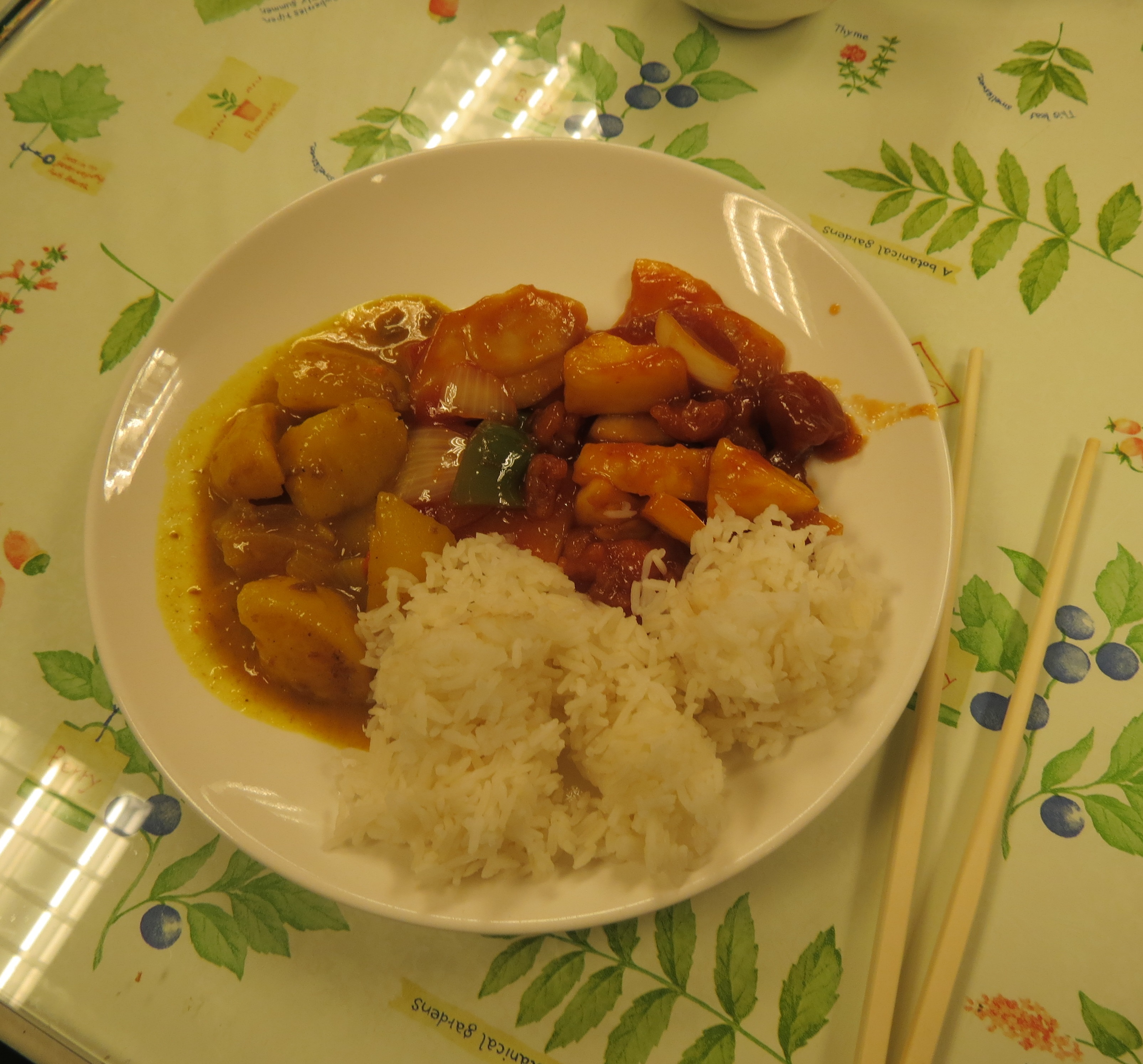 What a pleasant surprise! Apparently, Sweet and Sour Pork is not an American invention, but a real Cantonese dish – or at least one that has been adopted back.
What a pleasant surprise! Apparently, Sweet and Sour Pork is not an American invention, but a real Cantonese dish – or at least one that has been adopted back.
Most meals at the House of Prayer consist of steamed rice, whole fish (last night was Snapper with Rainbow Shreds, “shreds” apparently being slivers of bell pepper), some kind of other meat dish, soup, and fruit. Breakfast includes fried eggs and hot dogs, and a huge bowl of what looked like muesli. I hoped it was congee (a sort of porridge like grits but made from rice). It turned out to be very thin oatmeal. Drinks are generally hot, which is a bit hard to take when the temperature is in the humid 80s.
Since we are a large party, each day five of us are tasked with cleanup duty. After scraping the dishes, we give them a quick soapy wash and put them in the “dishwasher”, which is more like a rinser/sterilizer. A single tray of dishes goes in at a time, but it comes out in about two and a half minutes!
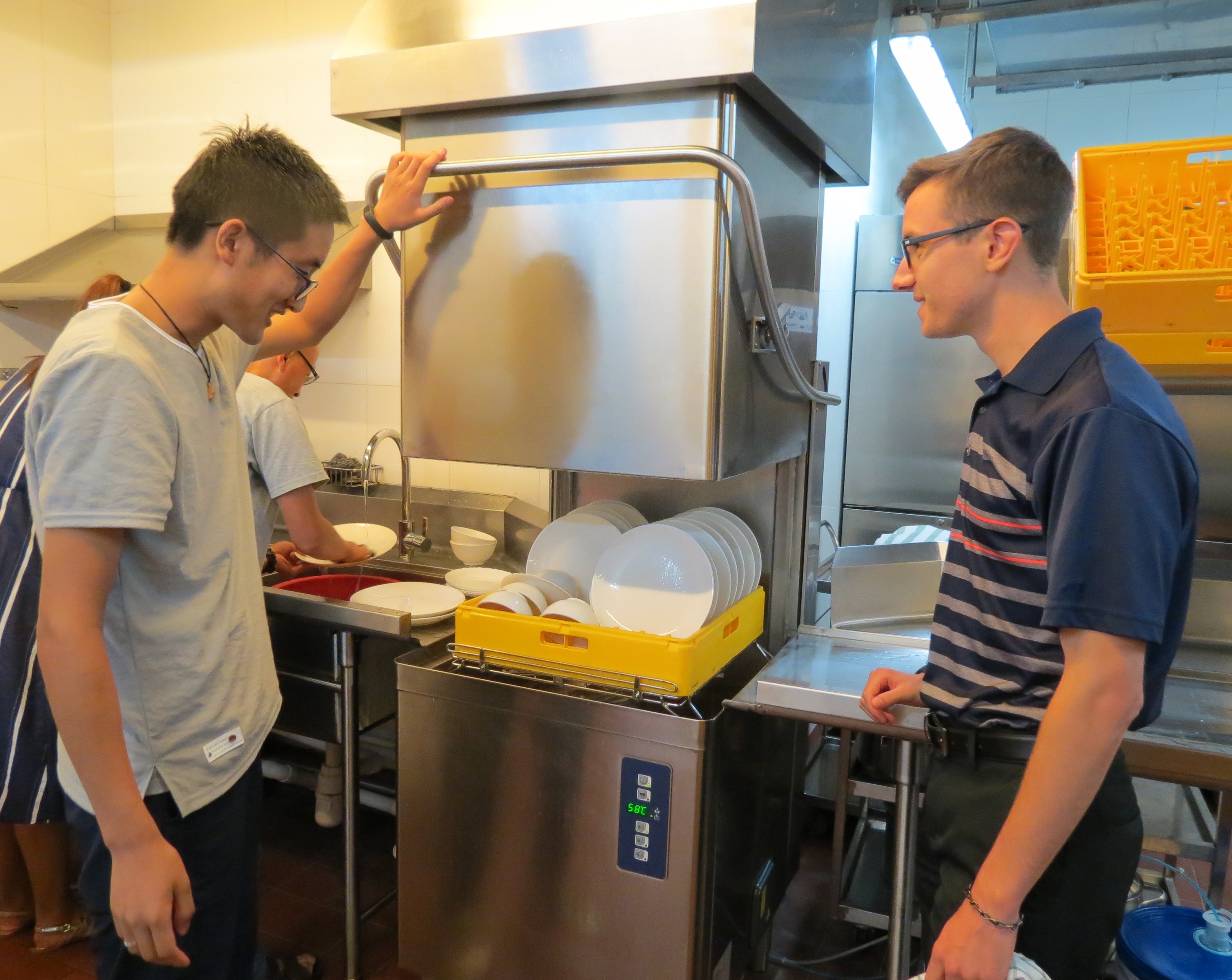
Then we dry and put away. I was (firmly) corrected in this last task. It seems that not only do all the mugs go into the cupboard upside down, but they must be stored according to color and type. Mugs with Mickey Mouse on them do not go on the same shelf as those with Donald Duck.
After dinner I met with Ms. E and Mr. P (the last arrival), both barely out of college and very eager, to discuss how they should plan their classes. Ms. K joined us, which was helpful since she has conducted training sessions in a large number of foreign countries on a large number of business topics. I explained my personal class routine (based on what I did last year and about which, more later) and they mentioned several of their own ideas, which sound both appropriate and useful. I think they went to bed very encouraged, because, to be honest, the guidelines Fr. B gives are so broad that it’s easy to feel completely lost. At a minimum, I think I was able to reassure them that they didn’t miss anything – we really do have a great degree of latitude in what and how we teach.
And then, the end of a perfect day…
. . . discovering in the newly-uncovered closet a large electric fan!


